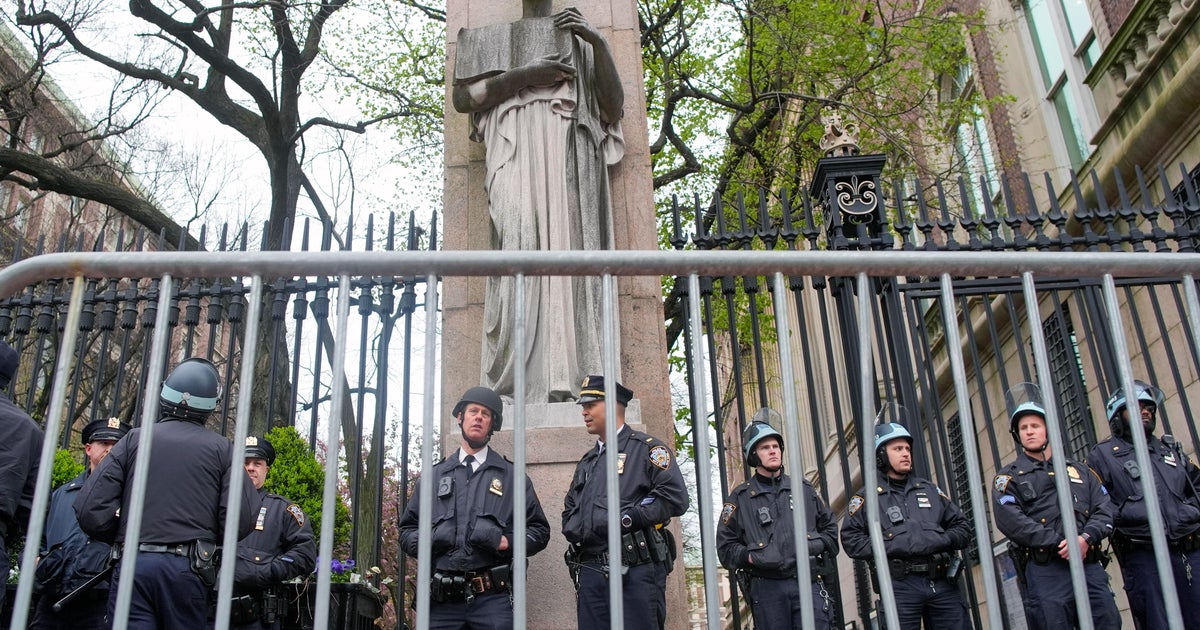Italy Struck With Strongest Earthquake In 36 Years
ROME (CBSNewYork/CBS News/AP) -- A powerful earthquake with a preliminary magnitude of 6.6 has rocked the same area of central and southern Italy hit by quake in August and a pair of aftershocks last week.
The Sunday earthquake – which was the strongest in 36 years – sent already quake-damaged buildings crumbling after a week of temblors that have left thousands homeless.
The head of Italy's civil protection agency, Fabrizio Curcio, said there were no immediate reports of deaths, but said some people had suffered injuries as numerous buildings that had resisted the previous temblors collapsed. He did not provide details on the injured.
Prime Minister Matteo Renzi immediately vowed Sunday that Italy will rebuild the homes, churches and other structures destroyed in the country's latest earthquake.
Renzi spoke Sunday hours after central Italy was struck. He said the financial resources will be found to restore essential elements of the national identity.
Among the structures that have been lost are churches, bell towers and other examples of Italy's cultural heritage.
Renzi said at a news conference: "We will rebuild everything - the houses, the churches, the shops. We are dealing (with) marvelous territories, territories of beauty."
The earthquake Sunday is believed to be the strongest quake to strike the country since 1980. A 6.9-magnitude quake in southern Campania that year killed some 3,000 people and caused extensive damage.
The Apennine region of central Italy, located along a major fault line, has been the site of dozens of significant earthquakes since then.
A 6.1-magnitude earthquake on Aug. 24 quake killed nearly 300 people and flattened entire villages.
Officials have blamed shoddy construction for the comparatively high death toll from the August quake. The hilltop town of Amatrice, in particular, suffered significant damage, including in newly constructed buildings.
To date, Italy's deadliest quake in recent history remains the 1908 Messina quake that killed tens of thousands of people.
Residents already rattled by a constant trembling of the earth rushed into piazzas and streets after being roused from bed by Sunday's 7:40 a.m. quake. Many people still had been sleeping in cars or evacuated to shelters or hotels in other areas after a pair of strong jolts last Wednesday.
Television images showed nuns rushing out of their church and into the main piazza in Norcia as the clock tower appeared about to crumble. One had to be carried by firefighters, while another was supported as she walked.
The ancient city of Norcia, famed for its Benedictine monastery and its cured meats, is one of the locations hardest-hit by the latest earthquake to rock Italy.
Eyewitnesses said the St. Benedict cathedral, the 14th century cathedral in one of the city's main piazza, crumbled in the Sunday morning quake and only its facade remains standing. Priests prayed in the piazza amid the rubble.
Norcia city assessor Giuseppina Perla tells the ANSA news agency, "It's as if the whole city fell down."
The city's ancient walls suffered damage, as did another famous Norcia church, St. Mary Argentea, known for its 15th century frescoes.
The mayor of quake-hit Ussita said a huge cloud of smoke erupted from the crumbled buildings.
"It's a disaster, a disaster!" Mayor Marco Rinaldi told the ANSA news agency. "I was sleeping in the car and I saw hell."
Another hard-hit city, Castelsantangelo sul Nera, also suffered new damage. In Arquata del Tronto, which had been devastated by the Aug. 24 earthquake that killed nearly 300 people, Arquata Mayor Aleandro Petrucci said, "There are no towns left."
"Everything came down," he said.
The quake was felt throughout the Italian peninsula, with reports as far north as Bolzano and as far south as Bari. Residents rushed into the streets in Rome, where ancient palazzi shook, swayed and lurched for a prolonged spell.
Austria's governmental earthquake monitoring organization said the quake was felt to varying degrees in the east and south of the country and all the way to the city of Salzburg. It says that at its strongest, residents in upper floors noticed a swaying sensation and a slow swinging of hanging objects.
The head of the civil protection authority in Italy's March region, Cesare Spuri, said there have been reports of buildings collapsing in many cities.
"We are trying to understand if people are under the rubble," Spuri said.
In Norcia, nuns knelt in prayer and a firefighter appealed to a priest to help maintain calm among dozens of residents gathered there, including some in wheel chairs.
The European-Mediterranean Seismological Center put the magnitude at 6.6 or 6.5 with an epicenter 132 kilometers northeast of Rome and 67 kilometers east of Perugia, near the epicenter of last week's temblors. The U.S. Geological Survey put the magnitude at 6.6.
The German Research Centre for Geosciences put the magnitude at 6.5 and said it had a depth of 10 kilometers, a relatively shallow quake near the surface but in the norm for the quake-prone Apennine Mountain region.
(TM and © Copyright 2016 CBS Radio Inc. and its relevant subsidiaries. CBS RADIO and EYE Logo TM and Copyright 2016 CBS Broadcasting Inc. Used under license. All Rights Reserved. This material may not be published, broadcast, rewritten, or redistributed. The Associated Press contributed to this report.)



